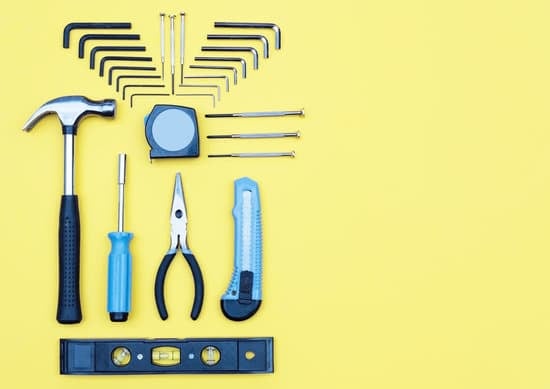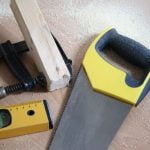Curious about home improvement loans? Wondering, “How much can I borrow for home improvement loan?” Home improvement loans are a popular option for homeowners looking to make renovations or upgrades to their homes.
Whether you’re planning a small update or a major remodel, understanding how much you can borrow is crucial in the decision-making process. In this article, we’ll explore the different types of home improvement loans, factors that determine borrowing limits, the application process, and tips for finding the best lender for your specific needs.
When it comes to financing your home improvements, there are several options available. From personal loans to home equity lines of credit (HELOCs) and cash-out refinance mortgages, it’s important to understand the differences between these types of loans and how they can impact your borrowing potential. By exploring these options and considering your own financial situation, you can make an informed decision about which type of loan is best suited for your project.
In addition to the various types of home improvement loans, there are also factors that will determine how much you can borrow. Lenders will consider your credit score, income, existing debts, and the appraised value of your home when determining your borrowing limit. Understanding these key factors will give you insight into what lenders are looking for and how you can maximize your borrowing potential. Stay tuned as we dive deeper into each of these areas throughout this article.
Types of Home Improvement Loans
When it comes to financing home improvement projects, there are several types of home improvement loans available to homeowners. Each type of loan has its own benefits and considerations, so it’s important to explore your options before making a decision. Here are some common types of home improvement loans that you might consider:
- Personal Loans: These unsecured loans can be used for various purposes, including home improvement projects. They often have fixed interest rates and repayment terms, making it easier to budget for your project.
- Home Equity Loans: If you have built up equity in your home, you may be able to take out a home equity loan to finance your renovations. This type of loan typically has lower interest rates than personal loans because it is secured by the value of your home.
- Home Equity Lines of Credit (HELOC): A HELOC is similar to a home equity loan in that it is also based on the equity in your home. However, with a HELOC, you have access to a line of credit that you can borrow against as needed, rather than receiving the funds in a lump sum.
Before choosing a specific type of home improvement loan, carefully consider the terms and requirements associated with each option. Some loans may require collateral or have higher interest rates, while others may offer more flexibility in how funds are accessed and repaid. It’s important to choose the option that best fits your financial situation and goals for your home improvement project.
Factors That Determine How Much You Can Borrow
When applying for a home improvement loan, there are several factors that will determine how much you can borrow. The first factor is your credit score, which plays a significant role in the approval process and the interest rate you will receive. Lenders use your credit score to assess your creditworthiness and determine the level of risk in lending to you. Generally, the higher your credit score, the more favorable terms you can expect on your loan.
Another important factor is your debt-to-income ratio, which is a measure of your monthly debt payments compared to your income. Lenders use this ratio to assess your ability to manage additional debt and make timely payments. A lower debt-to-income ratio indicates that you have more disposable income available to repay a home improvement loan, increasing your chances of approval for a larger loan amount.
The value of your home and the amount of equity you have in it will also affect how much you can borrow for a home improvement loan. Lenders typically use the loan-to-value (LTV) ratio to determine the maximum amount they are willing to lend.
The LTV ratio is calculated by dividing the loan amount by the appraised value of the property or its purchase price, whichever is lower. The higher the equity you have in your home, the more you may be able to borrow for improvements.
| Factors | Impact on Borrowing Amount |
|---|---|
| Credit Score | Determines interest rate and approval odds |
| Debt-to-Income Ratio | Assesses ability to manage additional debt |
| Loan-to-Value Ratio | Affects maximum borrowing limit based on home equity |
Understanding these factors and working to improve them before applying for a home improvement loan can help increase how much you can borrow. It’s important to review these aspects and take steps such as paying down existing debt or improving credit scores before seeking financing for home improvements. By doing so, homeowners can position themselves more favorably in the eyes of lenders and potentially qualify for higher borrowing limits with better terms overall.
The Application Process
When applying for a home improvement loan, there are several important steps to follow in order to increase your chances of getting approved. Here are the key elements of the application process:
1. Research and Comparison: The first step in getting approved for a home improvement loan is to research and compare different lenders and their loan products. Look at factors such as interest rates, terms, fees, and customer reviews to determine which lender is the best fit for your needs.
2. Gather Documentation: Once you have selected a lender, the next step is to gather all necessary documentation for the application process. This may include proof of income, tax returns, bank statements, employment verification, and any other financial documents required by the lender.
3. Complete the Application: After gathering all required documentation, it’s time to complete the loan application. Be sure to fill out the application accurately and completely to avoid any delays in the approval process.
4. Provide Collateral or Security: Depending on the type of home improvement loan you are applying for, you may need to provide collateral or security for the loan. This could be in the form of equity in your home or other valuable assets that can be used as security for the loan.
By following these steps in the application process, you can improve your chances of getting approved for a home improvement loan that meets your needs and helps you achieve your renovation goals.
Calculating Your Borrowing Limit
Understanding the concept of loan-to-value (LTV) ratio is essential when it comes to calculating how much you can borrow for a home improvement loan. The LTV ratio is a measure used by lenders to determine the amount of mortgage you can get in relation to the appraised value of the property. In simpler terms, it represents the percentage of your home’s value that you are borrowing.
To calculate your borrowing limit, you will need to first determine the current market value of your property. This can be done through a professional appraisal or by researching similar homes in your area that have recently sold. Once you have an estimate of your home’s worth, you can calculate the maximum amount you can borrow based on the lender’s LTV ratio requirements.
For example, if a lender has an LTV ratio limit of 80%, and your home is appraised at $250,000, then the maximum amount you could potentially borrow would be $200,000 (80% of $250,000). Keep in mind that different lenders may have varying LTV ratio limits, so it’s important to shop around and compare offers to find the best fit for your financial needs and goals.
Understanding how LTV ratios work will help you make an informed decision about how much you can realistically borrow for your home improvement project.
Risks and Benefits of Borrowing for Home Improvement
Pursuing a home improvement loan comes with both risks and benefits that should be carefully considered before making a decision. One of the primary benefits of borrowing for home improvement is the potential increase in the value of your property.
By making upgrades or renovations, you can enhance the overall appeal and functionality of your home, which may lead to a higher resale value in the future. Additionally, using a loan to fund home improvements can allow you to make the necessary updates sooner rather than later, potentially improving your quality of life.
However, there are also risks associated with taking out a loan for home improvement. One such risk is the possibility of over-improving your property, meaning that you invest more money into renovations than what your home is actually worth in the current market.
This could result in financial loss if you are unable to recoup your investment when selling the property. Another risk to consider is the potential for unexpected costs or changes during the renovation process, which could lead to additional borrowing or financial strain.
It’s important to weigh these risks and benefits carefully before deciding whether to pursue a home improvement loan. Consider consulting with a financial advisor or professional in real estate before making any major decisions to ensure that you are fully informed about the potential outcomes of borrowing for home improvement.
Alternatives to a Home Improvement Loan
When considering funding for home improvement, a home improvement loan is not the only option available. There are other financing alternatives that you can explore to meet your renovation needs.
Credit Cards
Using a credit card for home improvement expenses can be a convenient option, especially for smaller projects. Many credit card companies offer low or no interest promotional periods, which can help manage costs. However, it is important to be cautious with high-interest rates after the promotional period ends.
Home Equity Line of Credit (HELOC)
A HELOC allows homeowners to borrow against the equity in their homes. This revolving line of credit gives you access to funds as needed, and you only pay interest on the amount borrowed. HELOCs typically have lower interest rates compared to personal loans or credit cards, making them an attractive option for larger home improvement projects.
Cash-Out Refinance
If you have built up equity in your home, you may consider a cash-out refinance. This involves refinancing your mortgage for more than you currently owe and taking the difference in cash. While this can provide a large sum of money for renovations, it’s important to carefully consider the long-term impact on your mortgage payments before pursuing this option.
Exploring these financing alternatives will help you make an informed decision about how to fund your home improvement project without relying solely on a traditional home improvement loan. Each option has its own advantages and disadvantages, so it’s important to carefully evaluate which option best suits your financial situation and renovation needs.
Tips for Maximizing Your Borrowing Potential
Maximizing your borrowing potential for a home improvement loan can make a significant difference in the success of your project. Here are some tips to help you get the most out of your loan:
1. Improve Your Credit Score: Lenders consider your credit score when deciding how much to lend you, as it reflects your history of managing debt. To maximize your borrowing potential, work on improving your credit score by paying bills on time, reducing outstanding debt, and avoiding new credit inquiries.
2. Increase Your Home Equity: Home equity is the value of your home minus any outstanding mortgage balance. The more equity you have, the higher the amount you can borrow. Consider making extra mortgage payments or taking steps to increase the value of your home through renovations or improvements to boost your home equity.
3. Shop Around for the Best Loan Terms: Different lenders offer different terms and interest rates for home improvement loans. Take the time to compare offers from various lenders to find the best terms that suit your financial situation. Look beyond just interest rates and consider fees, repayment terms, and customer service when evaluating lenders.
By following these tips and being proactive in managing your finances, you can maximize your borrowing potential for a home improvement loan and ensure that you have access to the funds necessary to complete your desired renovations or upgrades.
How to Find the Best Lender for Your Home Improvement Loan
When you’re looking to finance your home improvement project, finding the right lender is crucial to ensure that you get the best terms and rates for your loan. With so many lenders out there, it can be overwhelming to figure out where to start. Here are some key steps in finding the best lender for your home improvement loan:
Research and Compare Lenders
Start by doing some research on the different lenders that offer home improvement loans. Look into traditional banks, credit unions, online lenders, and even government-backed loan programs. Take note of their interest rates, fees, and repayment terms. There are also websites and platforms that allow you to compare multiple lenders at once, making it easier for you to see all your options.
Check Their Reputation
Once you’ve narrowed down a list of potential lenders, take some time to check their reputation. Read customer reviews and ratings online to see what other borrowers have experienced with each lender. You can also check with the Better Business Bureau or other consumer protection agencies to see if there have been any complaints filed against the lender.
Ask Questions
Before making a decision, don’t be afraid to reach out and ask questions to potential lenders. Inquire about their specific requirements for home improvement loans, their application process, and any additional fees or charges that may apply. This will give you a better understanding of how each lender operates and help you make an informed decision.
By following these steps and taking the time to thoroughly research your options, you can find the best lender for your home improvement loan that meets your needs and helps bring your renovation dreams into reality.
Conclusion
In conclusion, when considering borrowing for home improvement, it is important to be well-informed and to thoroughly understand all the options available. Home improvement loans can provide the funds needed to make necessary upgrades and renovations, but borrowers must carefully consider their financial situation and the impact that borrowing will have on their overall budget.
It is crucial to carefully evaluate the types of home improvement loans available and to understand how much you can realistically borrow based on factors such as your credit score, income, and the value of your property. Additionally, being aware of the risks and benefits associated with borrowing for home improvement can help you make an informed decision about whether a loan is the best option for your specific needs.
Lastly, before committing to a home improvement loan, it is advisable to explore alternative financing options and to shop around for the best lender. By doing so, you can ensure that you are getting the most favorable terms and rates possible. Making informed decisions about borrowing for home improvement will ultimately lead to a successful renovation project without putting excessive strain on your finances.
Frequently Asked Questions
What Is the Average Length of a Home Improvement Loan?
The average length of a home improvement loan typically ranges from 5 to 20 years, depending on the lender and the specific terms of the loan. Shorter repayment periods may result in higher monthly payments, while longer terms can spread out the cost over a more extended period.
Are Home Improvement Loans Tax Deductible?
Home improvement loans are not generally tax-deductible, as they are considered personal loans used for home renovations. However, there are certain exceptions for home equity loans or home equity lines of credit (HELOCs) if the funds are used specifically for home improvements and meet other IRS criteria.
Are Renovation Loans a Good Idea?
Renovation loans can be a good idea for homeowners who want to make significant upgrades or repairs to their homes but don’t have cash on hand to fund the project. These loans provide the necessary funds upfront and allow borrowers to repay over time.
However, it’s essential to carefully consider the terms and interest rates to ensure that a renovation loan is a financially responsible decision.

I’m thrilled to have you here as a part of the Remodeling Top community. This is where my journey as an architect and remodeling enthusiast intersects with your passion for transforming houses into dream homes.





